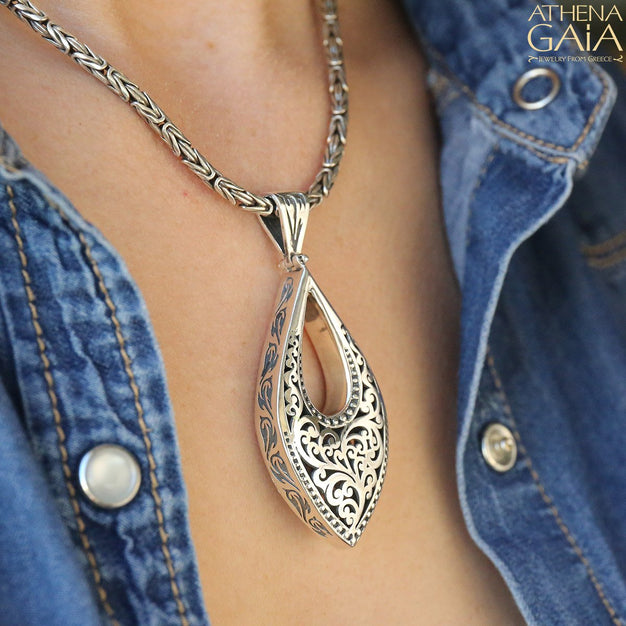Shown here: Sterling Silver Byzantine Chain and Sterling Silver Love Drop Pendant By Yianni
We are often asked "Will silver jewelry tarnish?" and the only answer is YES—Sterling silver jewelry will tarnish over time. The proper care, storage and cleaning of your jewelry will help maintain the appearance of your piece.
Another popular question is "Do jewelers use rhodium plating?" and for our workshops, all but one do NOT. There are some black silver options available with our Stilvi workshop which are rhodium plated on only a few pieces to add contrast. All other workshops do not apply rhodium plate. Rhodium plating eventually wears off over time (and unevenly), allowing the silver underneath to start tarnishing, so our workshops avoid it.
It's natural for silver to turn "dark"
As sterling silver naturally oxidizes over time, this "look" is made deliberate in some pieces of jewelry. In fact, most of our 925 sterling silver pieces are intentionally pre-oxidized on the base surface—meant to have an antique "look," or to bring out contrast in the metal. With the shiny portions of silver, do not be alarmed if you start to see a buildup of tarnish. A very good buff cloth like the one available in our store will polish the silver and take the top layer of oxidization off of the piece. It will also add a bit of protection until the next buff.
Avoid hair/skin product contact
Always put on your jewelry last to avoid contact with hair products, perfumes, cosmetics or lotions. Over time these products will build residue on your jewelry.
Avoid water when possible
Do not wear your jewelry in the ocean, hot tub, sauna, pool, bath or shower as water, heat or chlorine may damage your piece.
Buffing is the preferred method
Use caution when using sterling silver cleansers or jewelry solvents, as they may remove the unique finish of your design. Be sure you are using a proper liquid cleanser. We only recommend a buff cloth.
Keep silver in plastic! Moisture accelerates silver tarnish
Exposure to air and humidity will increase the tarnishing of your jewelry. Silver kept in a presentation box or pouch without a moisture seal will tarnish just by sitting in its case. Store each piece separately in a zip lock bag (use the one we send your piece in!) to avoid contact and scratching from other jewelry. To keep your jewelry in its original form, use the treated buff cloth available in our store.

